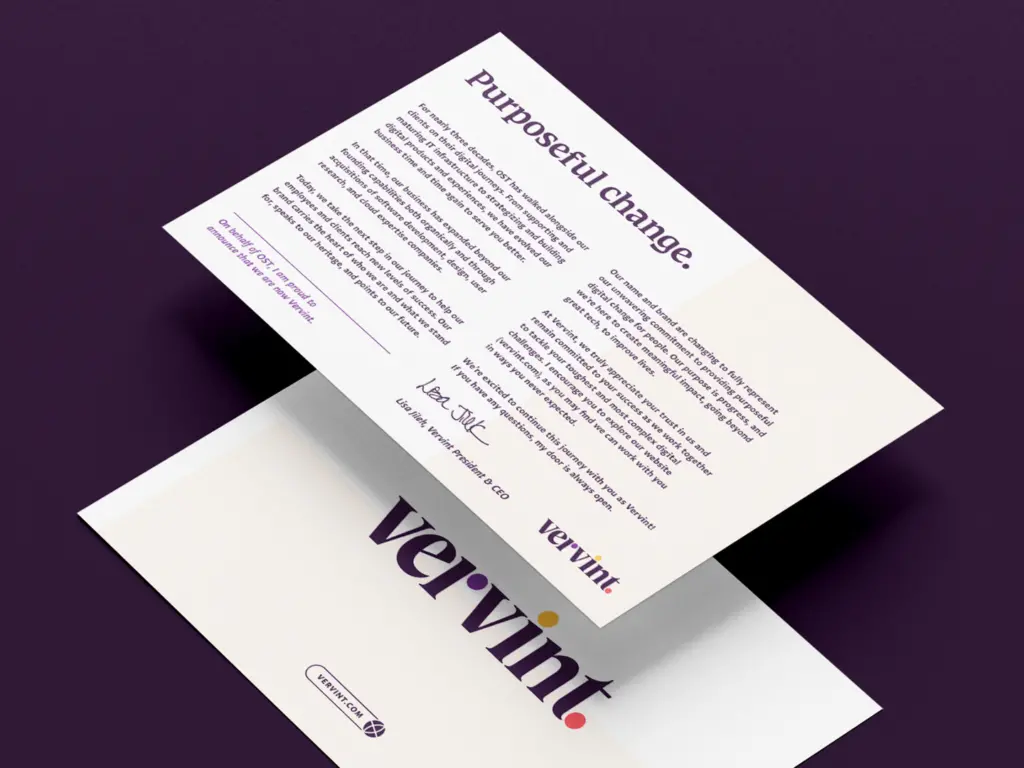Some of the most explosive growth in IT has occurred on the cloud in recent years. As demand for cloud services has increased, so has innovation in new functions the cloud can perform for businesses.
Most companies have focused on adopting three primary cloud services: software as a service (SaaS), platform as a service (PaaS), and infrastructure as a service (IaaS). But new consumer demands, new competition, and new cloud-based capabilities are pushing businesses toward increasingly complex and sophisticated digital technologies.
In this article, we’ll discuss different types of XaaS, pros and cons of cloud-based solutions, and how you can drive tangible business value with the cloud. And if you’re interested in exploring cloud solutions for your organization, let’s talk!
So, What Is XaaS?
Broadly, XaaS includes all the different types of computing services that are provided over the internet and available for purchase on an as-needed or subscription basis. Most of the services we all use every day are essentially XaaS.
For example, Netflix, Hulu, and other streaming services could loosely be considered video as a service. We pay a recurring fee each month for a certain number of seats so we can watch videos any time we want. An alternative model of video as a service would be movie rentals where you pay a set amount to rent a video. If you’ve only got time for one video this weekend, you pay x; if you want to watch 20 movies next weekend, you’d pay 20x.
These same XaaS models apply to large scale IT operations on the cloud. And the key benefit of XaaS solutions is that they are incredibly flexible. If you need more resources or services, you can get them almost instantaneously at a predictable price. And it’s just as easy if you want to scale back.
Flexible usage and pricing also come with flexible options. Cloud solutions come prepackaged with a vast array of tools that can expedite and optimize implementation, workflows, collaboration, compliance, development, and much more. But we’re getting a little ahead of ourselves, and we’ll discuss the benefits and drawbacks of XaaS a little later.
Different Types of XaaS
The three most common forms of “anything as a service” include SaaS, PaaS, and IaaS.
Software as a Service (SaaS)
With SaaS, a provider hosts complete applications and all the infrastructure required to support them so customers can use them via the internet. Basically every online and mobile application you use is an example of SaaS. Personal social media software like Facebook, enterprise-level CRMs like Salesforce, and business productivity platforms like Office 365 are all examples of SaaS.
Platform as a Service (PaaS)
PaaS gives organizations access to the tools and platforms they need to develop, test, and deploy new applications in the cloud without having to build all the infrastructure on-premises and install the software in-house. PaaS can be an effective model for public cloud, private cloud, and hybrid environments.
Infrastructure as a Service (IaaS)
IaaS is what many people envision when they think of the cloud, and it is usually an organization’s first step in moving toward the cloud. IaaS providers host servers, storage, and other virtualized resources, and their customers can utilize those resources over the internet.
These XaaS foundations have evolved into even more specific services that focus on other IT functions. Examples include:
Backup as a Service (BaaS) and Storage as a Service (STaaS)
Backup as a service (BaaS) and storage as a service (STaaS) allow companies to back up and store their data by connecting to a public, private, or hybrid cloud managed by a third-party provider rather than investing in on-premises infrastructure or trying to manage tapes and other storage media themselves.
Disaster Recovery as a Service (DRaaS)
Sometimes called “business continuity” or “application resiliency,” disaster recovery goes beyond simply backing up your organization’s data by providing a total system backup of data and applications. In the event of a disaster or total system failure, the cloud becomes your new environment and allows users to continue their day-to-day operations with minimal downtime. Your DRaaS environment can also act as a sandbox for cloud testing or as an overflow if sudden demand arises and applications need to run on virtual machines. Plus, you can also set up your DRaaS to pay for what you need when you need it rather than investing in a physical space that you pay for all the time.
Now, the applications for cloud solutions are continuing to expand at a nearly incomprehensible rate. Every day, new certified and optimized cloud features, apps, software, and end-to-end solutions are created and deployed in the cloud. Some are improvements and updates, but many of them are new innovations in increasingly niche spaces.
Examples of newer XaaS solutions include the following:
Malware as a Service (MaaS)
Malware as a service involves an organization or individual leasing hardware, software, and networks to carry out malware attacks on other businesses. It may also involve services like technical support or even money laundering. MaaS essentially provides everything a cybercriminal needs to start threatening individuals and organizations with attacks like ransomware.
Security as a Service (SECaaS)
As cyberattacks become increasingly more sophisticated and easier to launch, CIOs and CSOs are making a shift away from custom security solutions to outsourcing. Much like other XaaS offerings, SECaaS takes highly specialized and complex security functions off your IT team to create additional bandwidth for them to focus on core business competencies, innovation, and company growth while simultaneously offering increased security at a predictable cost.
The variety of XaaS solutions will undoubtedly continue to grow—and not just digitally. Manufacturers are offering equipment as a service (EaaS) to drive new revenue. Taxi companies, ridesharing businesses, and autonomous vehicles will continue to propel the shift toward greater reliance on transportation as a service (TaaS), otherwise known as car as a service (CaaS) or mobility as a service (MaaS). We’re already running out of unique acronyms.
The Benefits of XaaS Cloud Solutions
Why are leaders in manufacturing, healthcare, and other industries making the move to XaaS solutions? As we mentioned before, flexibility is the central value of cloud solutions. This flexibility in the cloud contrasts with the limitations of fully on-premises solutions where capacity is capped, useful product lifetimes are static at best (and unpredictable at worst), and very large investments are required to scale.
Moving your business toward XaaS can offer a wide variety of benefits beyond just flexibility. For example:
Reduced Overhead Costs
On the most basic level, moving some of your IT operations to the cloud can help you save on the overhead expenses associated with expanding your on-prem data center. Real estate and facility costs like cooling and power add up and drain budgets, especially if you are not fully utilizing all your data center resources at all times. With the cloud, all those costs are factored into your subscription and distributed across many other users.
XaaS solutions can also make work more flexible in order to reduce overhead. Employees can use a wide variety of devices. They can work from anywhere with an internet connection. They can collaborate instantaneously. With more flexible options to achieve productivity, your business may be able to find new ways to utilize your space and cut down on overhead costs.
Alternative Budget and Accounting Models
Cloud use is almost always priced using a subscription or consumption model. This shifts IT costs from CAPEX to OPEX, which opens up new flexibility for budgeting and accounting. In traditional on-prem IT, large investments need to be made in space and hardware to expand capabilities. Those CAPEX costs need to be amortized or depreciated over the lifetime of the products. This complicates accounting, and it makes it difficult to assess the true cost and value of your investment in IT.
With XaaS, IT costs can shift to OPEX. This means simpler accounting, more straightforward and granular ROI calculations, and often higher profit margins. More than anything else, the cloud opens up possibilities for alternative financial approaches to the IT-as-a-cost-center issue. With public cloud, private cloud, and hybrid cloud XaaS solutions available, your business can find the right balance of CAPEX and OPEX for your financial needs.
Shifting Your IT Team’s Focus
With XaaS (and especially with IaaS and managed services), your IT team can cut back on putting out fires and day-to-day operations. Instead, they can focus on value-added projects, innovation, and cross-functional support. In particular, XaaS is creating new delivery models for internal IT operations at organizations. As other teams have technology needs, IT can essentially act as a broker of cloud services to find the best XaaS solution. Sometimes, that may simply be a SaaS application that fits all their needs. Other times, it may be a custom solution built on a PaaS foundation. Either way, XaaS is helping businesses rapidly design and launch new services both internally and externally.
Speed of Scaling Up
Provisioning additional infrastructure and other resources is essentially instantaneous with the cloud. That means new users, whether external or internal, can gain access to applications and other technologies as soon as they need them.
New Revenue Streams via Commoditization
Let’s say you develop a new cloud-based solution for your organization. What’s preventing you from commoditizing that intellectual property (IP) as a SaaS product for other organizations to purchase? Nothing. This is exactly how XaaS solutions have proliferated so much in the last few years. Organizations are using the cloud to solve problems, innovate, save on costs internally, and then increase profits by commoditizing those innovations (and the data they generate).
Culture Shift From Products to Platforms
Perhaps one of the greatest benefits of XaaS is that it’s helping businesses connect with consumers, achieve alignment across teams, and accelerate growth. Instead of asking “do we have the capacity for this?” businesses are able to utilize the cloud to ask, “what can we do with all this new capacity?”
And the market is also shifting toward all things XaaS. Consumers are now accustomed to per seat, per user, and consumptive models for everything from entertainment to ridesharing. So, whether your business is trying to optimize operations or create new revenue streams, XaaS can be a path to get there.

Are the IT Disciplines of the Past Still Relevant Today?
The Drawbacks of XaaS Cloud Solutions
Rather than inherent limitations or flaws in the platform, most of the “cons” organizations experience with cloud implementations are challenges that can be overcome with the right balance of skills, governance, and understanding. Some of the common challenges associated with XaaS include the ones below.
Cost Management for Cloud Services
One of the more common issues that companies face with XaaS is that expenses are hard to predict (and thus budget). This is especially true for businesses that have experienced a kind of “cloud sprawl” across siloed teams all using different services for their own projects. A variety of solutions are available to resolve and even prevent these issues. For example, careful planning, cloud cost governance, and cloud cost optimization can help you monitor and manage consumption.
Data Control and Privacy Concerns
For many business stakeholders, moving data to a public cloud or manipulating it with a third-party cloud service can raise concerns about control and privacy. But the cloud comes with robust tools and features to enhance security and provide granular control over your data. Similarly, data or workloads you move to the cloud should be covered under your service level agreement (SLA) with any vendor.
Regulatory and Compliance Issues
Taking data control one step further, the mandate to enforce HIPAA, GDPR, and other regulations and compliance requirements can deter some organizations from considering XaaS solutions. But again, the cloud comes with built-in features for compliance and security. There’s a good chance you’re not the first organization in your industry to consider the cloud. And you can bet your XaaS provider or cloud vendor is willing to work with you to address any unique needs you have.
These common pitfalls of cloud solutions can be avoided by doing your due diligence to understand the landscape, strategize about the best path forward, and ensure that you have the skills and knowledge you need to move forward successfully.
What’s the Best Way to Leverage the Cloud for Your Business?
Vervint can help you develop a cloud strategy based on your unique needs and help you implement a solution that will drive tangible business value. Whether you’re contemplating the cloud or seeking a highly skilled team with deep expertise in both strategy and technology, let’s talk. Fill out a contact form to get in touch. We look forward to helping you drive new business value with XaaS and more!


